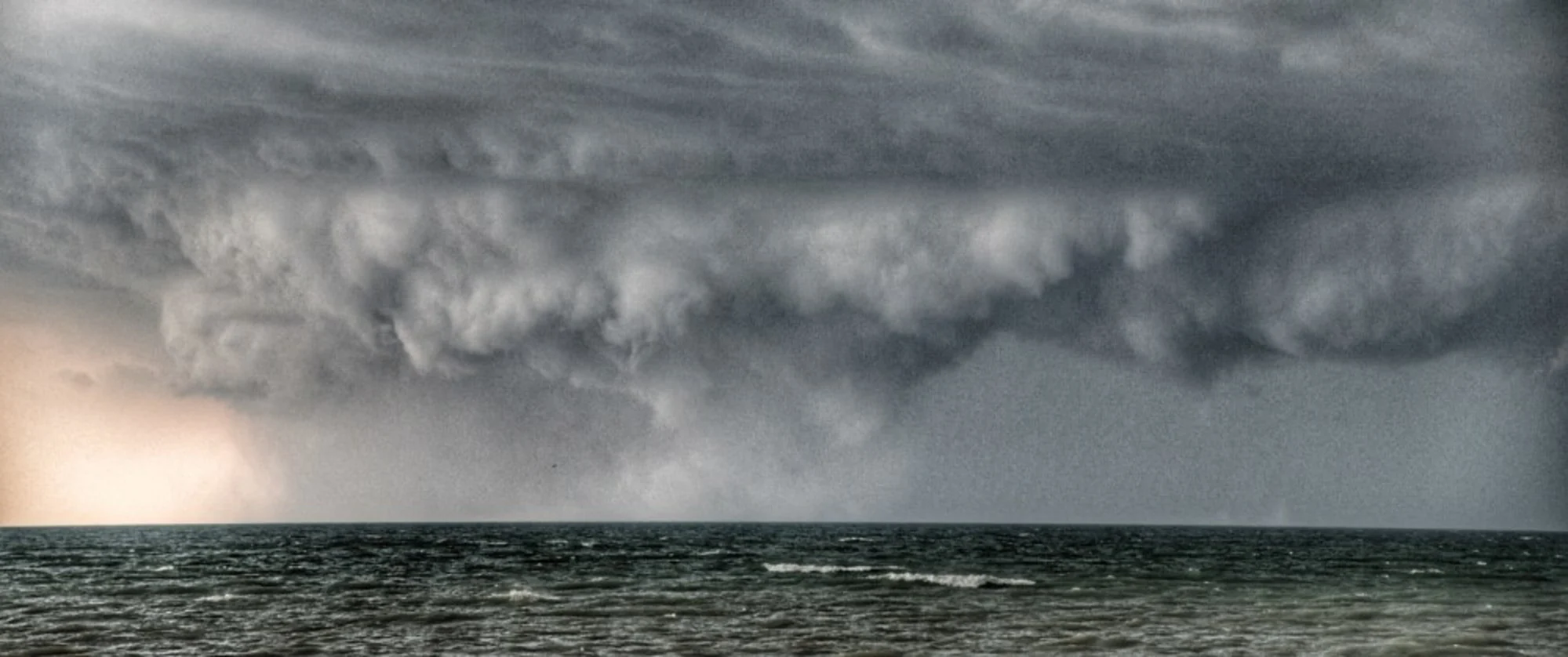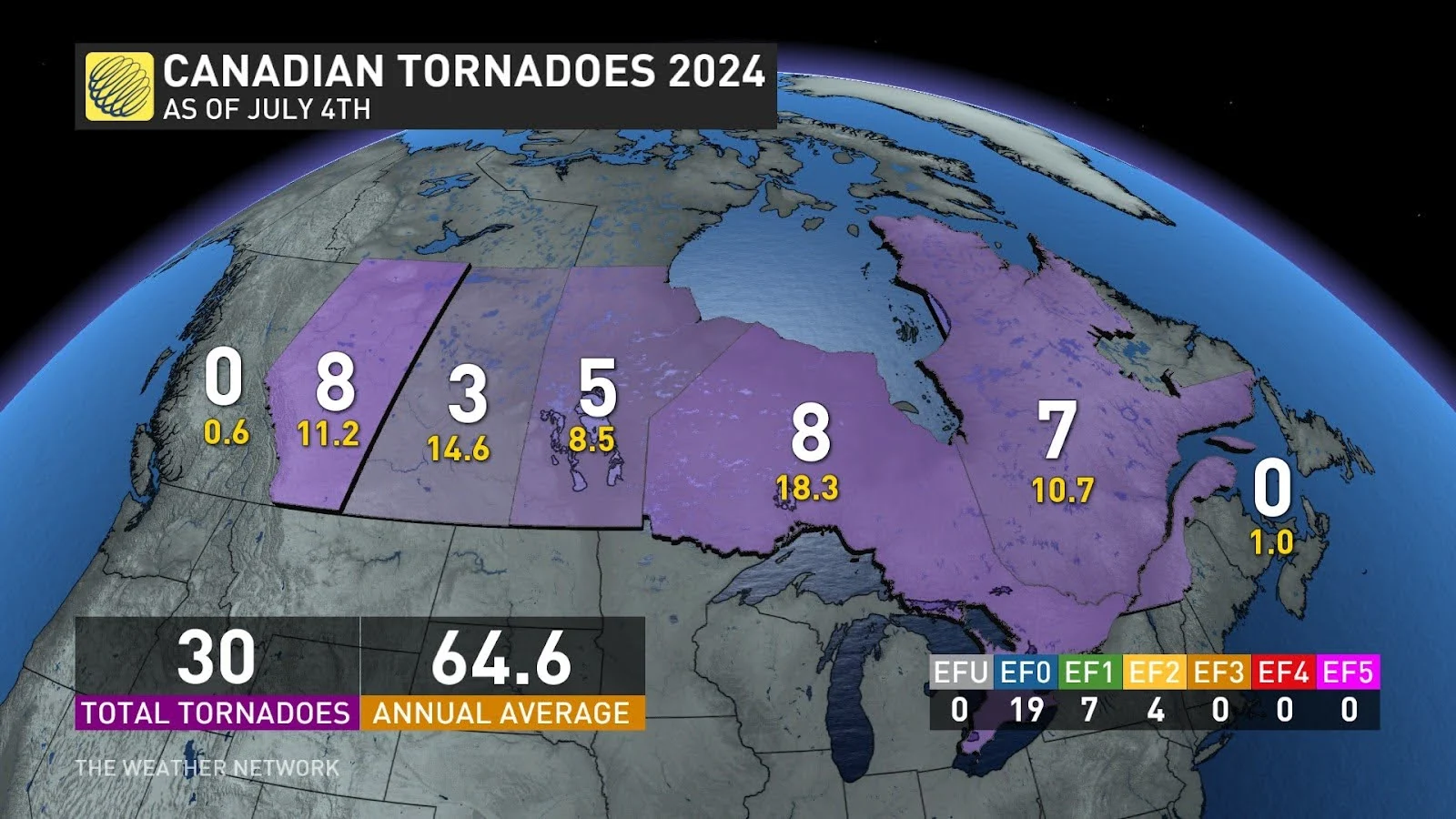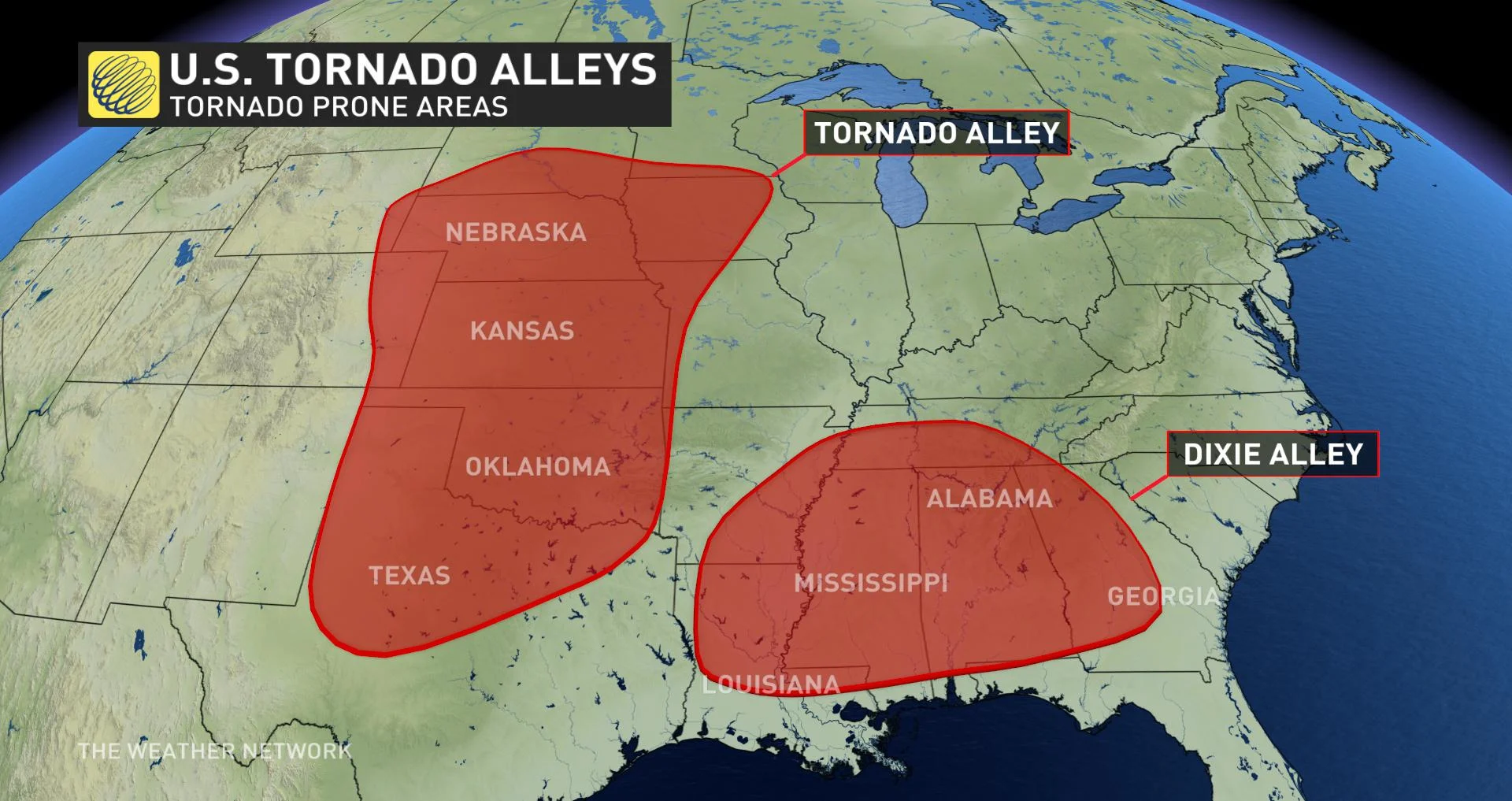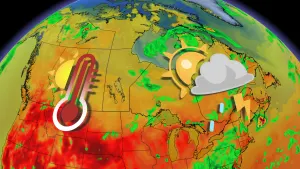
Move over Prairies; Ontario is now Canada’s tornado 'hot spot'
Ontario is now Canada's provincial tornado capital based on data from the last 30 years
When it comes to tornado occurrences, Canada ranks second globally, trailing only the United States, but the provincial ‘winner’ is perhaps not the first one you’d think.
New data is moving Canada’s tornado capital east.
“Based on the last 30 years of data set from 1980 to 2009, it was Saskatchewan that was tops in the country with 17 and a bit tornadoes per year,” says Dr. David Sills of the Northern Tornadoes Project (NTP). “Now we’ve just completed the 1991 to the 2020 30-year data set, and when we do that, we’ve got a new top province, and that’s Ontario with 18 tornadoes per year.”
NTP started up in 2017, with the goal of discovering all tornadoes occurring specifically in Northern Ontario, north of Lake Superior, through the use of satellite imagery and other technologies. After the success of that pilot project, they expanded in 2018 to include all of Ontario. In 2019, the team received $6.4 million from ImpactWX and another $2.5 million from Western University, which allowed NTP to go coast-to-coast in their hunt for tornadoes.
“We’re now finding a lot of tornadoes with satellite imagery, and we didn’t have that in the past,” explains Dr. Sills. “So there’s a lot more tornadoes in northwestern Ontario that we didn’t have before, so that’s increasing the number in Ontario.”
The reason tornadoes are happening more frequently east of the Prairies is complex. Better data collection stands out, but there may be an overall change in where we get storms in Canada.

Canada's 2024 tornado count as of July 4 (The Weather Network)
RELATED: If Canada's tornado alley is shifting east, how can we better prepare?
Dr. Sills adds that “there’s also something happening on the Prairies, where we’re just seeing [fewer] tornadoes. We thought Saskatchewan would be a big bullseye of tornado activity, and since we’ve started this project, it hasn’t been.”
Last year only saw one tornado in Saskatchewan, according to Dr. Sills, compared to 30 in Ontario.
DON'T MISS: July is Canada’s most active tornado month. What can we expect?
More ominous reasons
There's another, more ominous, reason we’re seeing a shift in where the majority of tornadoes are occurring: the U.S. Tornado Alley is shifting northeast.
“Something we’re certainly aware of is that in the U.S., there are a couple of studies now that have shown there’s a shift beginning away from the traditional Tornado Alley in the Plains towards more populated areas in the East,” says Dr. Sills.

Dixie Alley and Tornado Alley (The Weather Network)
SEE ALSO: Why the famous 'Tornado Alley' is on the move
The shift in Tornado Alley, however, does not necessarily mean Ontario will start seeing increasingly powerful tornadoes in the years ahead.
“[Canada gets] a couple of EF4 [tornadoes] every decade, maybe one EF5, but they’re probably occurring every 20… 30 years, maybe,” says Dr. Sills.
We hear about those powerful tornadoes in the U.S. more often than in Canada, but that’s because more tornadoes occur there than they do here, adds Sills.
RELATED: There's a big difference between an EF0 and EF5
Is climate change a factor?
“With climate change, if our season is lengthening, and it probably will, we’ll get more warm air coming further north. By lengthening our tornado season, we get more tornadoes,” explains Dr. Sills. “And if we start to get more tornadoes, that increases the number [of tornadoes] we get here, [giving] us more chances of getting the strong ones.”
WATCH BELOW: What to expect as we head into the peak of Canadian tornado season
Header image shows tornado over Lake Huron on September 7, 2021. Photo taken by Mark Robinson, a storm chaser and meteorologist at The Weather Network.










